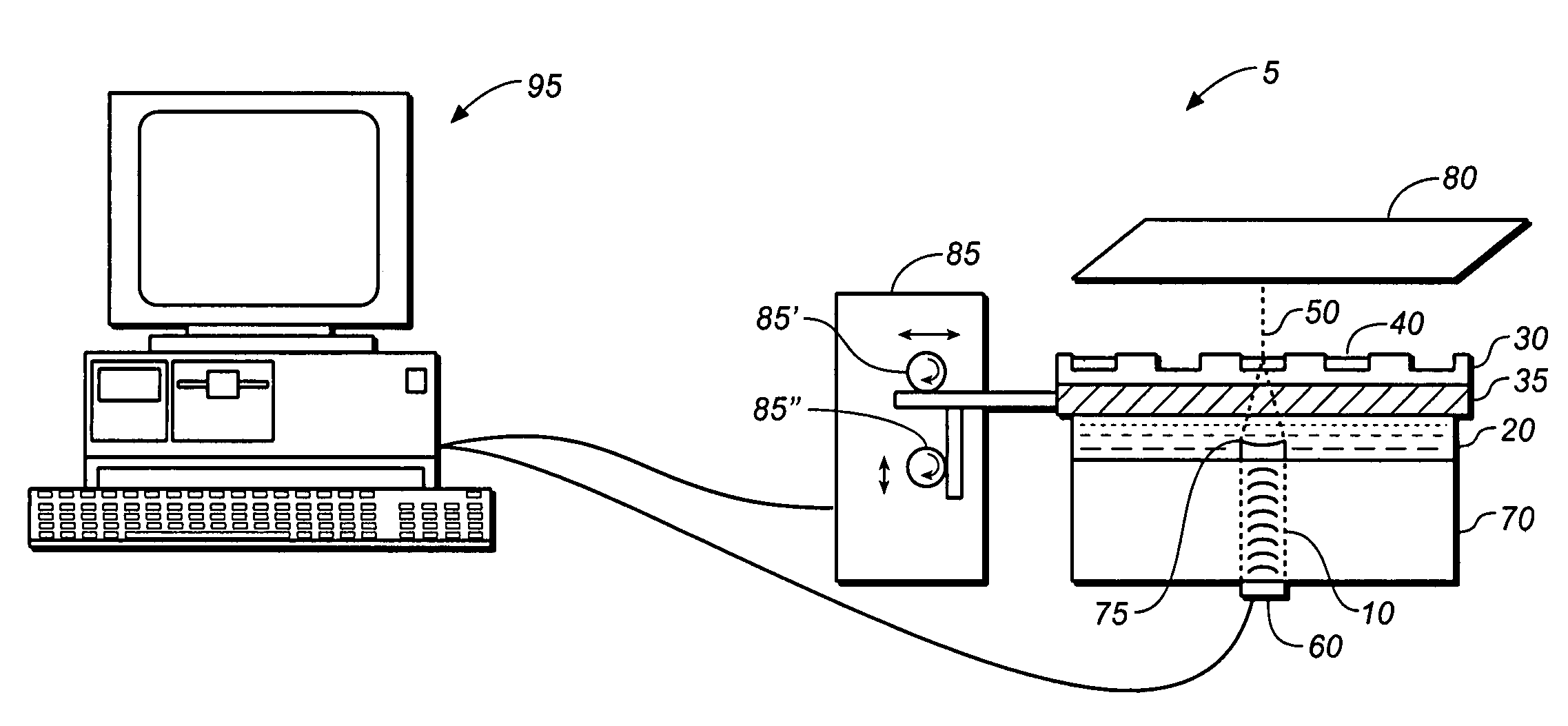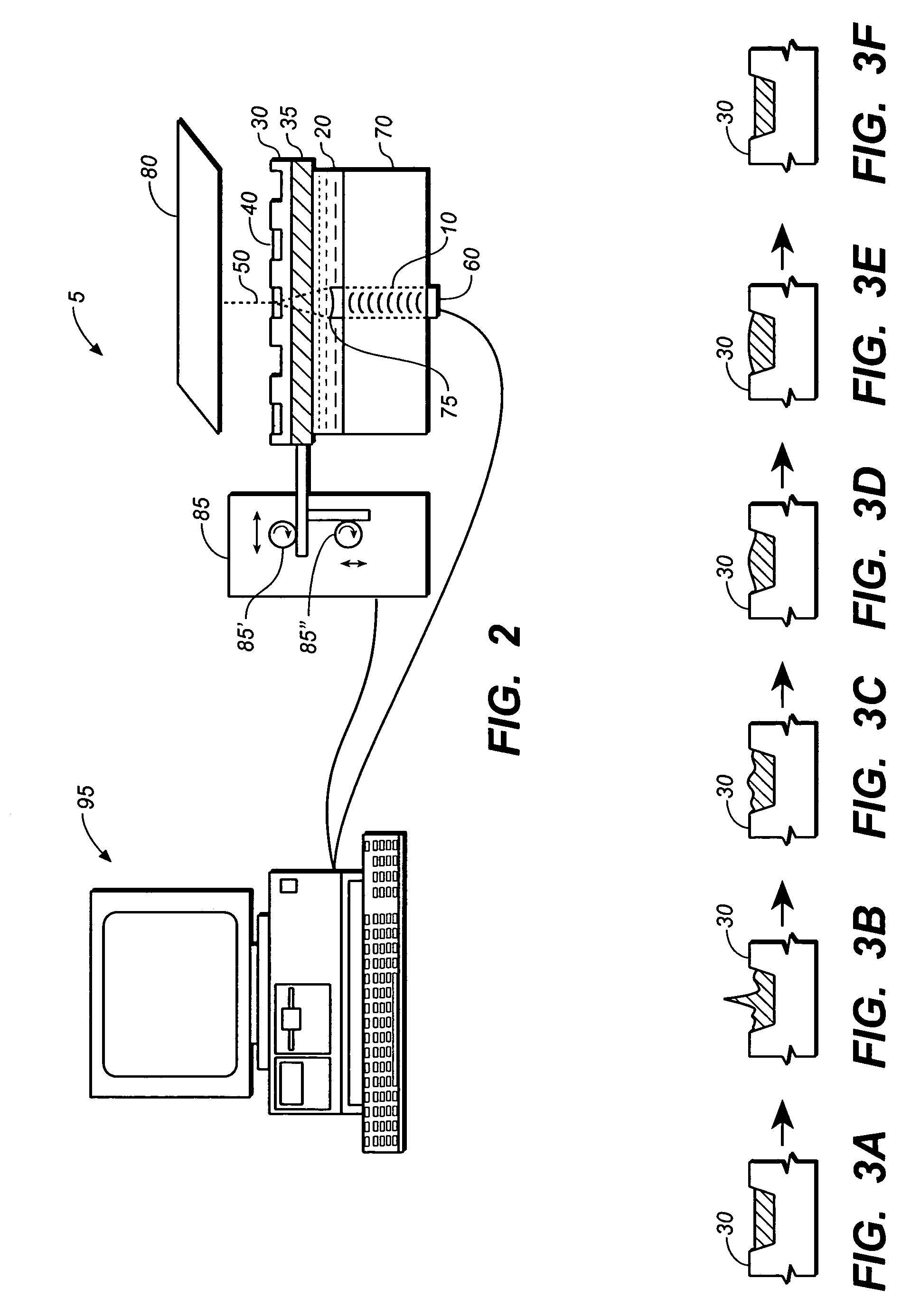Non-contact techniques for measuring viscosity and surface tension information of a liquid
a technology of viscosity and surface tension, which is applied in the direction of instruments, specific gravity measurement, counting objects on conveyors, etc., can solve the problems of increasing the likelihood of contamination, introducing contamination, and limiting or adversely affecting the acoustic liquid ejector
- Summary
- Abstract
- Description
- Claims
- Application Information
AI Technical Summary
Problems solved by technology
Method used
Image
Examples
Embodiment Construction
[0025]The present invention relates to methods of measuring viscosity and surface tension information of a liquid without contacting the liquid and in particular, to methods of measuring surface tension and viscosity information of the liquid using acoustic energy.
[0026]With reference to FIG. 1a, the method of the present invention includes the following steps: (1) oscillate a free surface of a first or source liquid, (2) detect the source liquid wave characteristics of the oscillating free surface and (3) analyze the source liquid wave characteristics. As indicated in FIG. 1b, one embodiment of the present invention provides that the detecting step comprises delivering a series of acoustic pulses at the oscillating free surface as the oscillating free surface relaxes and detecting acoustic reflections from the oscillating free surface as it relaxes. Additionally, the step of analyzing the source liquid wave characteristics may include comparing an attribute of the wave profile of t...
PUM
| Property | Measurement | Unit |
|---|---|---|
| time | aaaaa | aaaaa |
| viscosity | aaaaa | aaaaa |
| surface tension | aaaaa | aaaaa |
Abstract
Description
Claims
Application Information
 Login to View More
Login to View More - R&D
- Intellectual Property
- Life Sciences
- Materials
- Tech Scout
- Unparalleled Data Quality
- Higher Quality Content
- 60% Fewer Hallucinations
Browse by: Latest US Patents, China's latest patents, Technical Efficacy Thesaurus, Application Domain, Technology Topic, Popular Technical Reports.
© 2025 PatSnap. All rights reserved.Legal|Privacy policy|Modern Slavery Act Transparency Statement|Sitemap|About US| Contact US: help@patsnap.com



